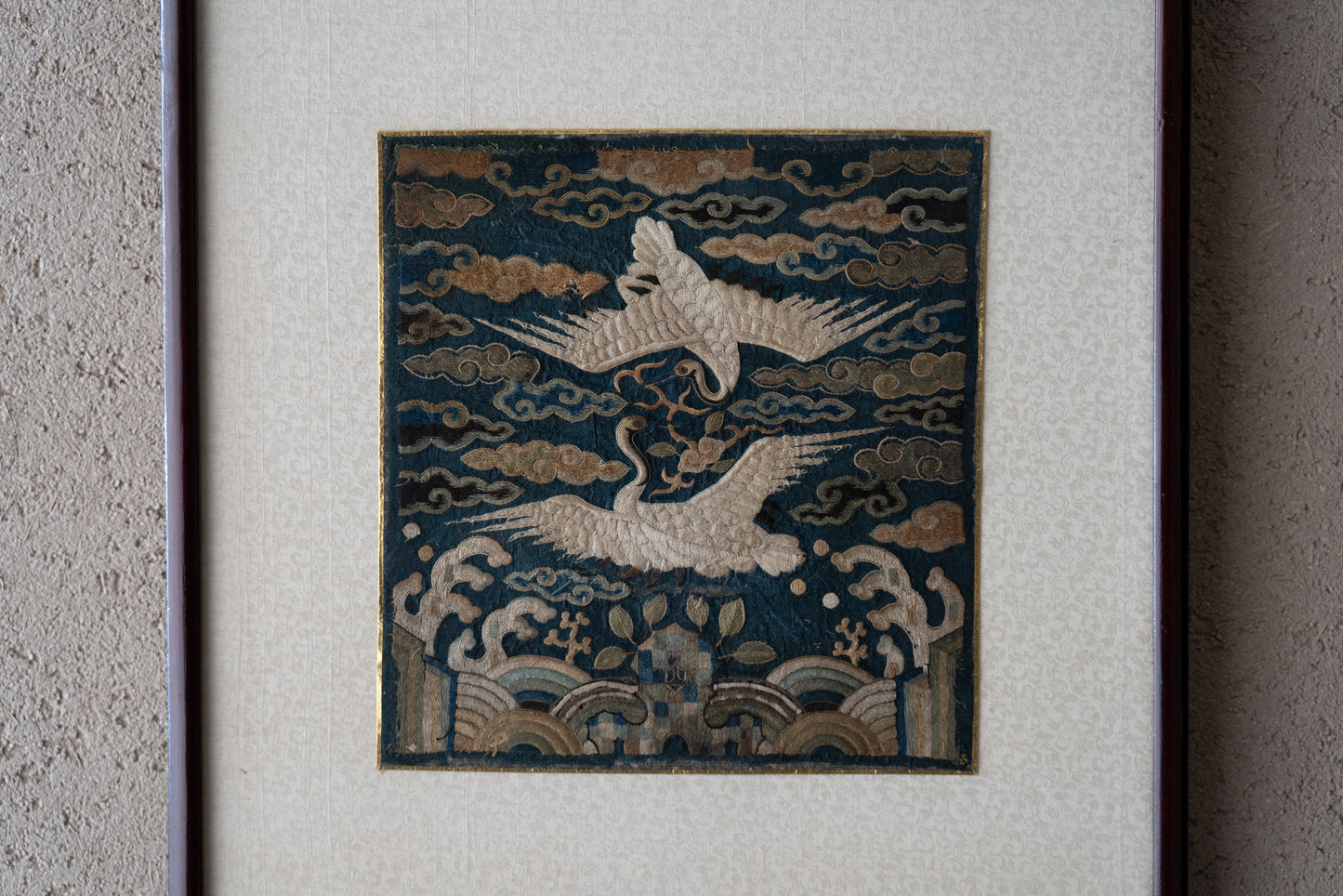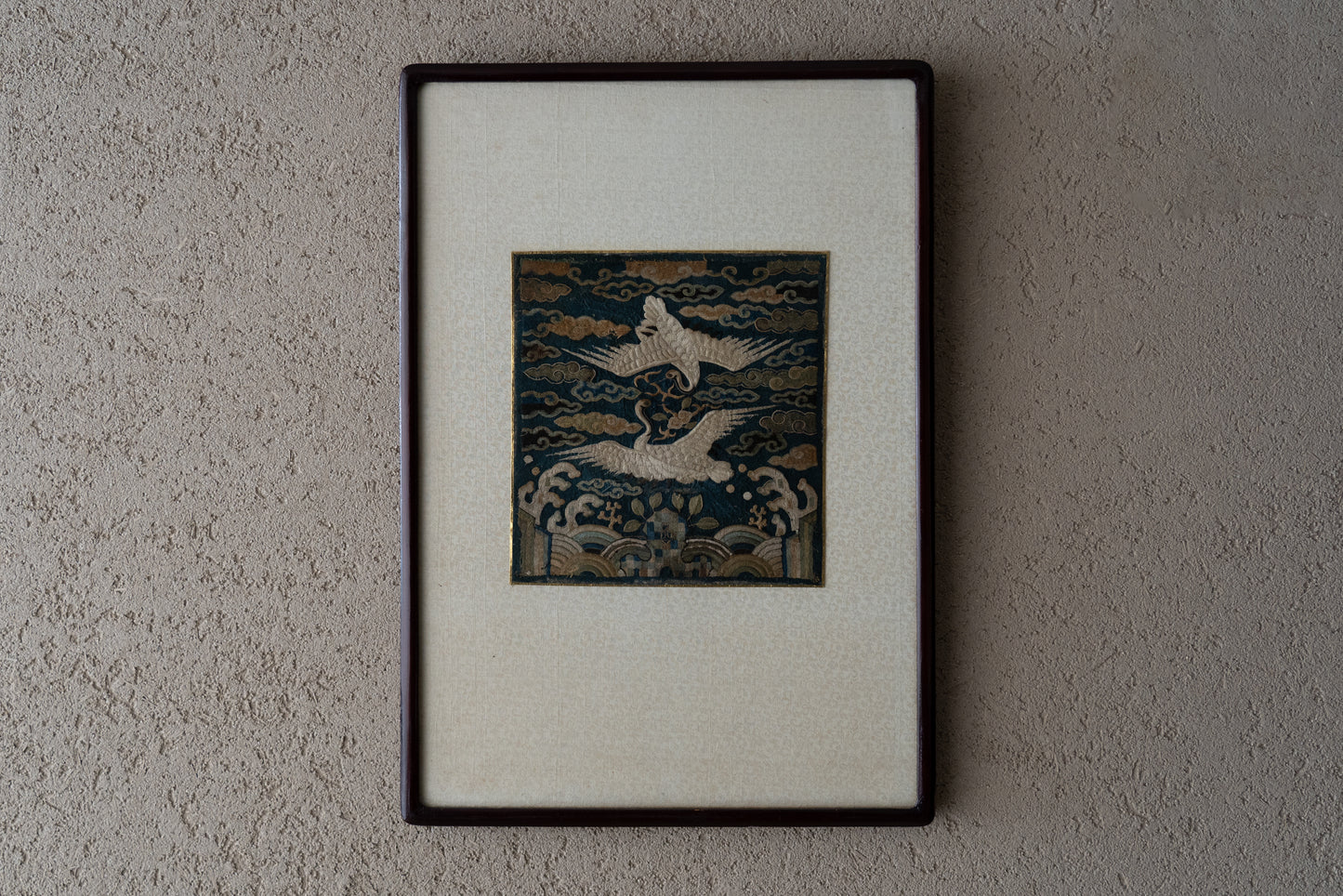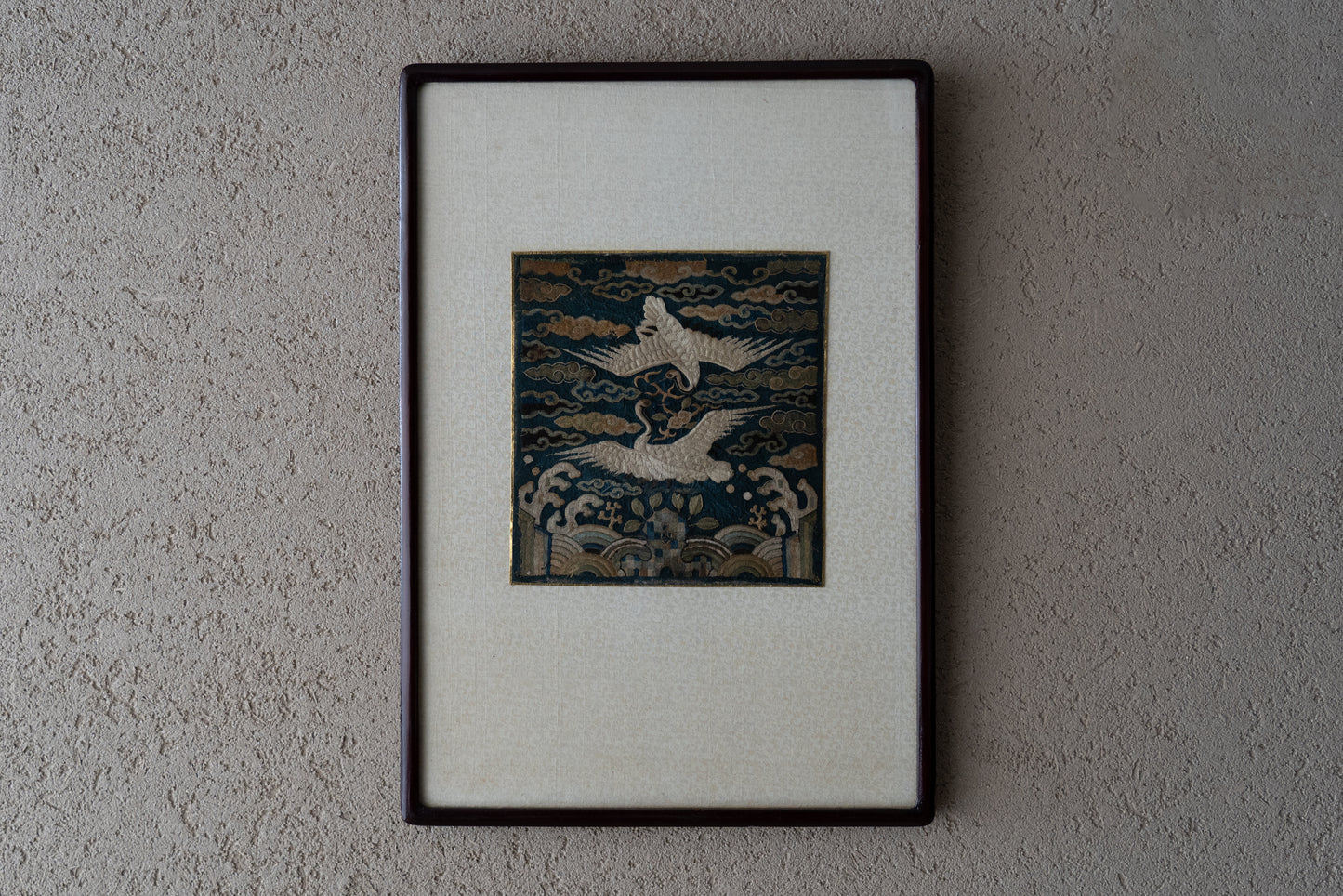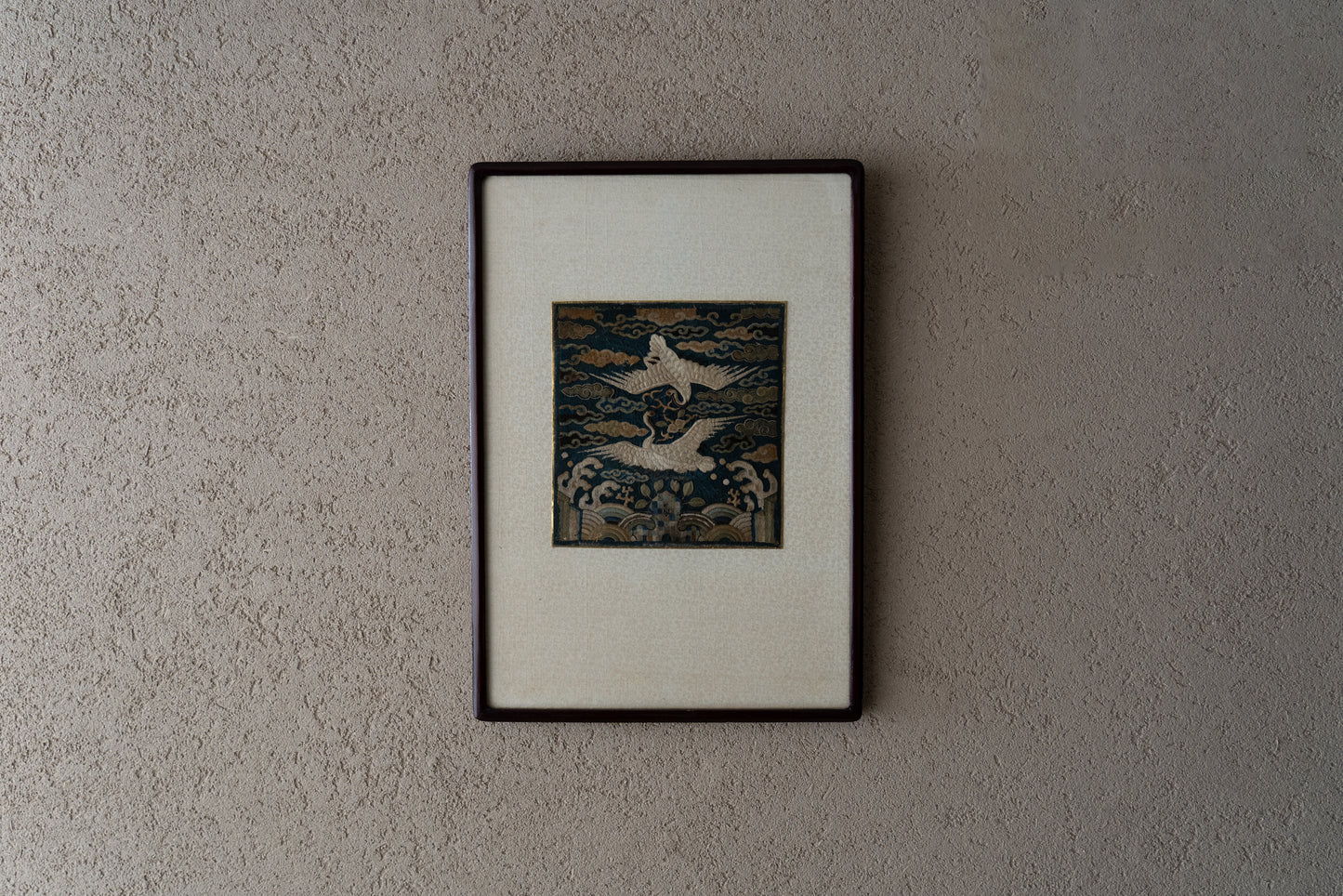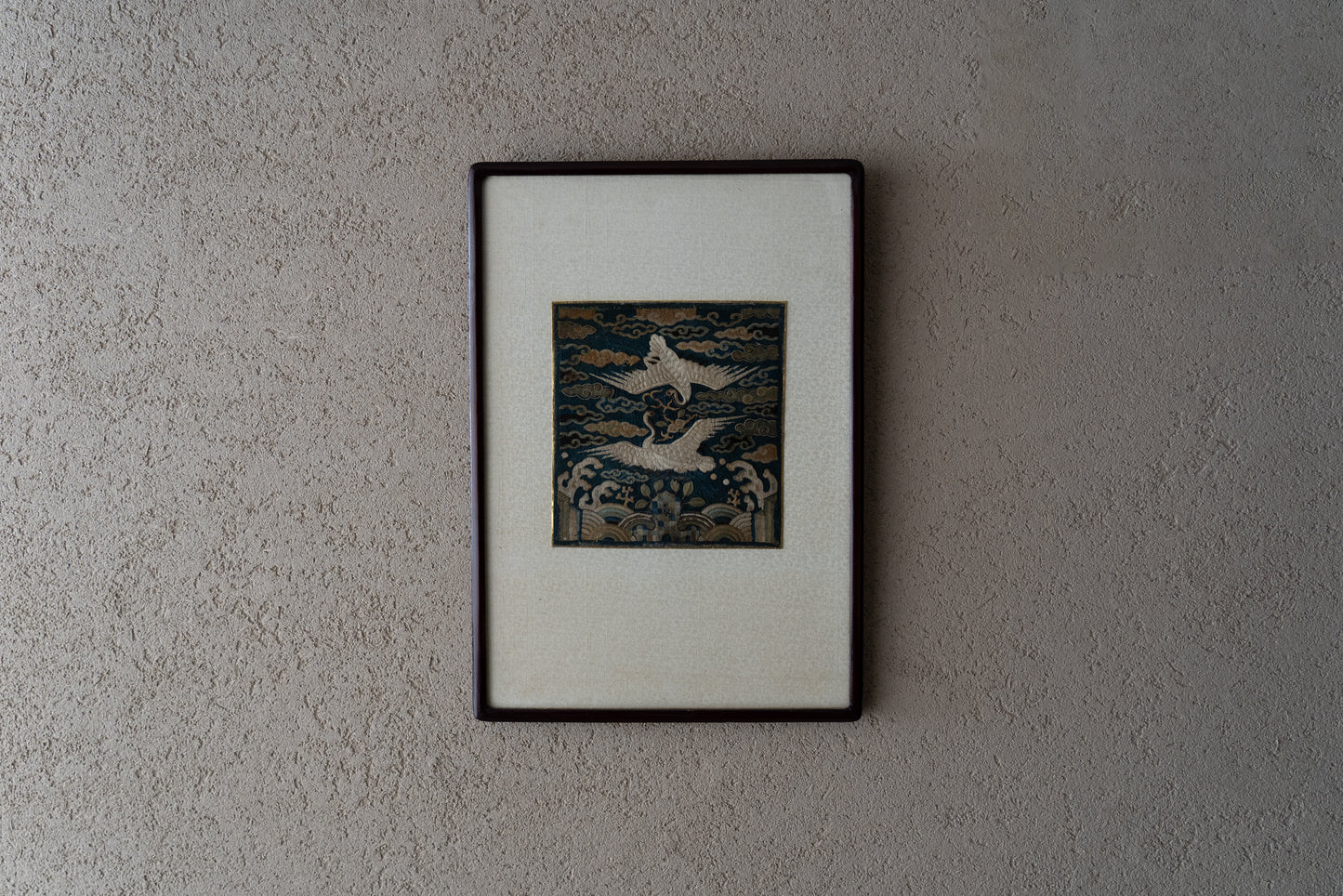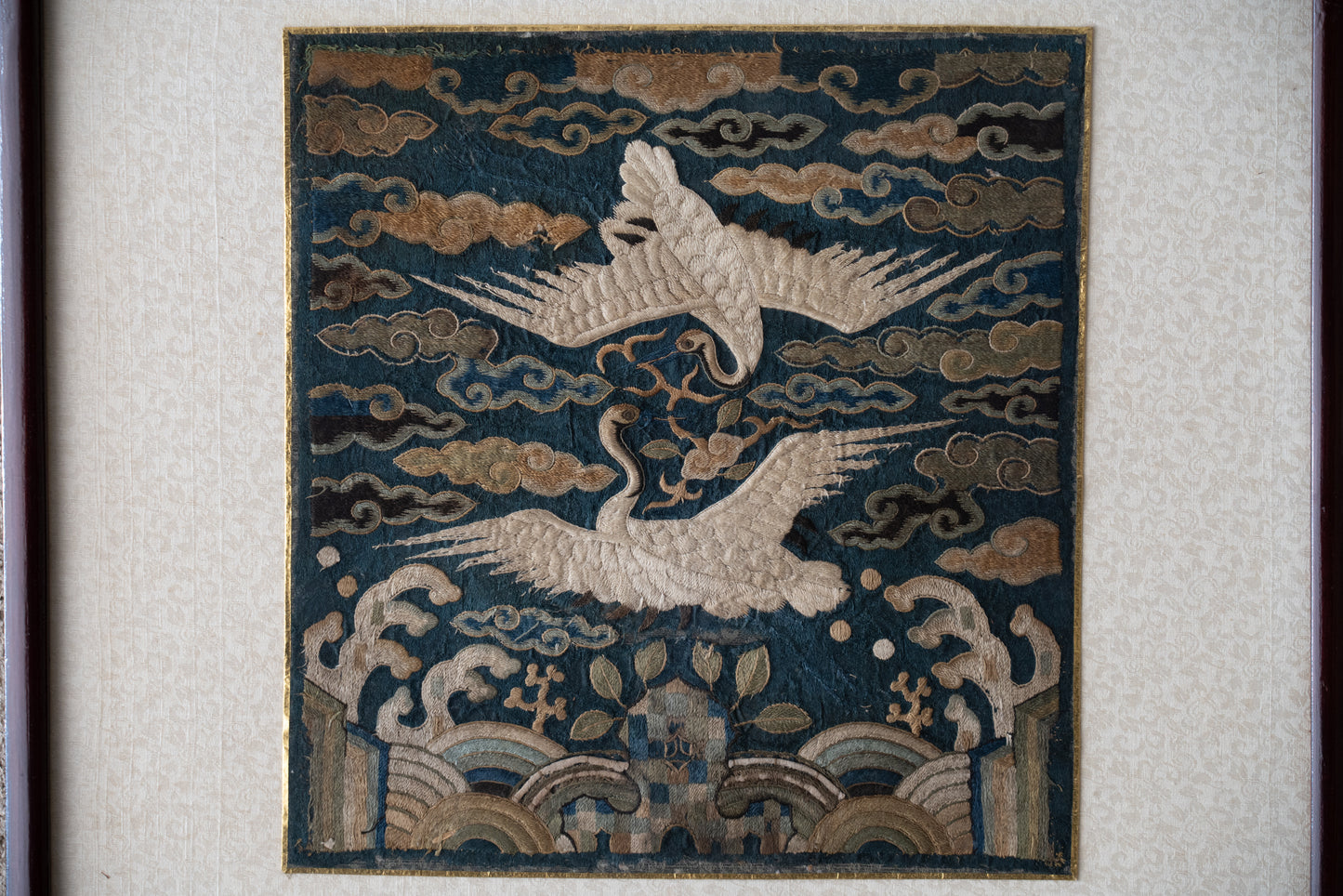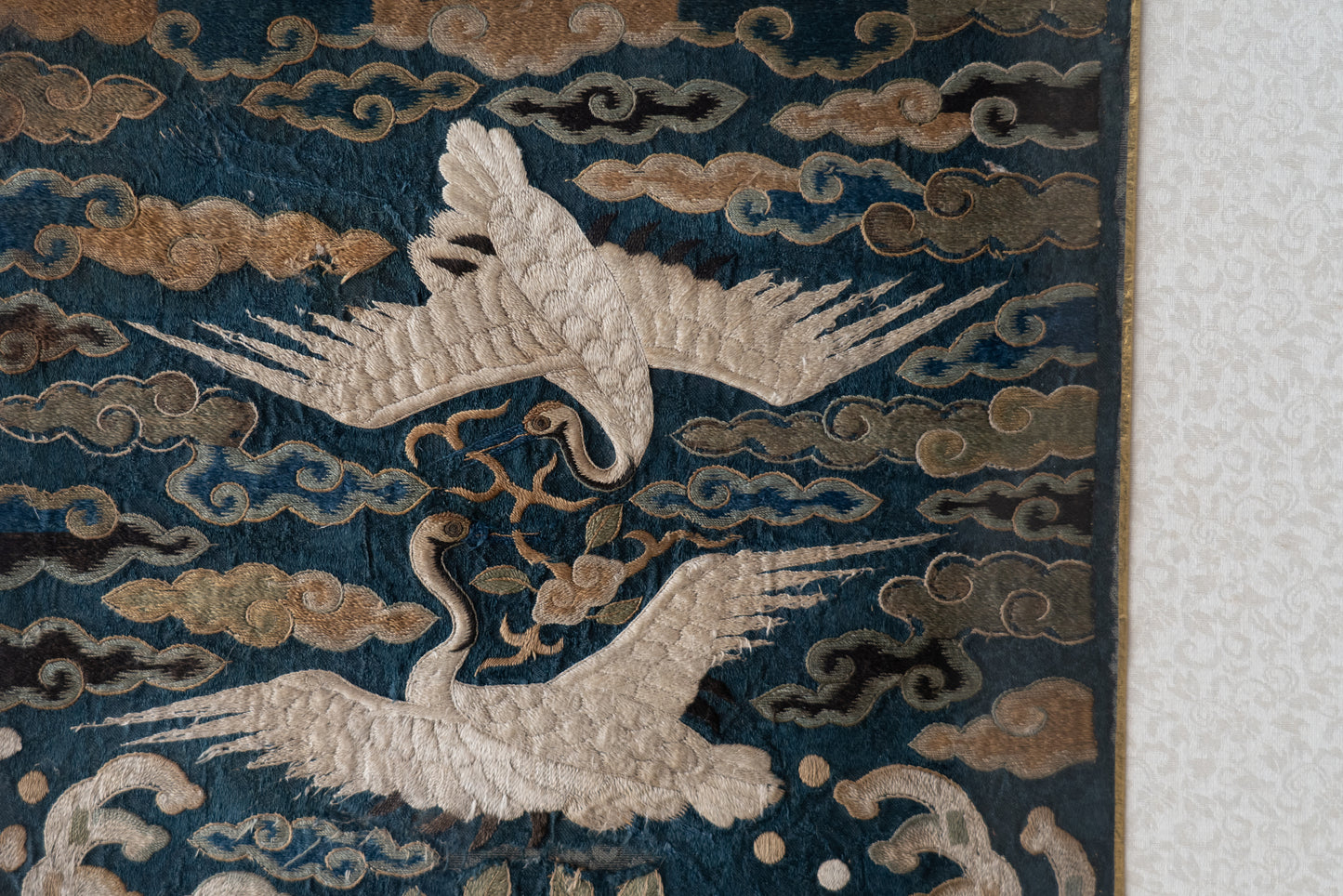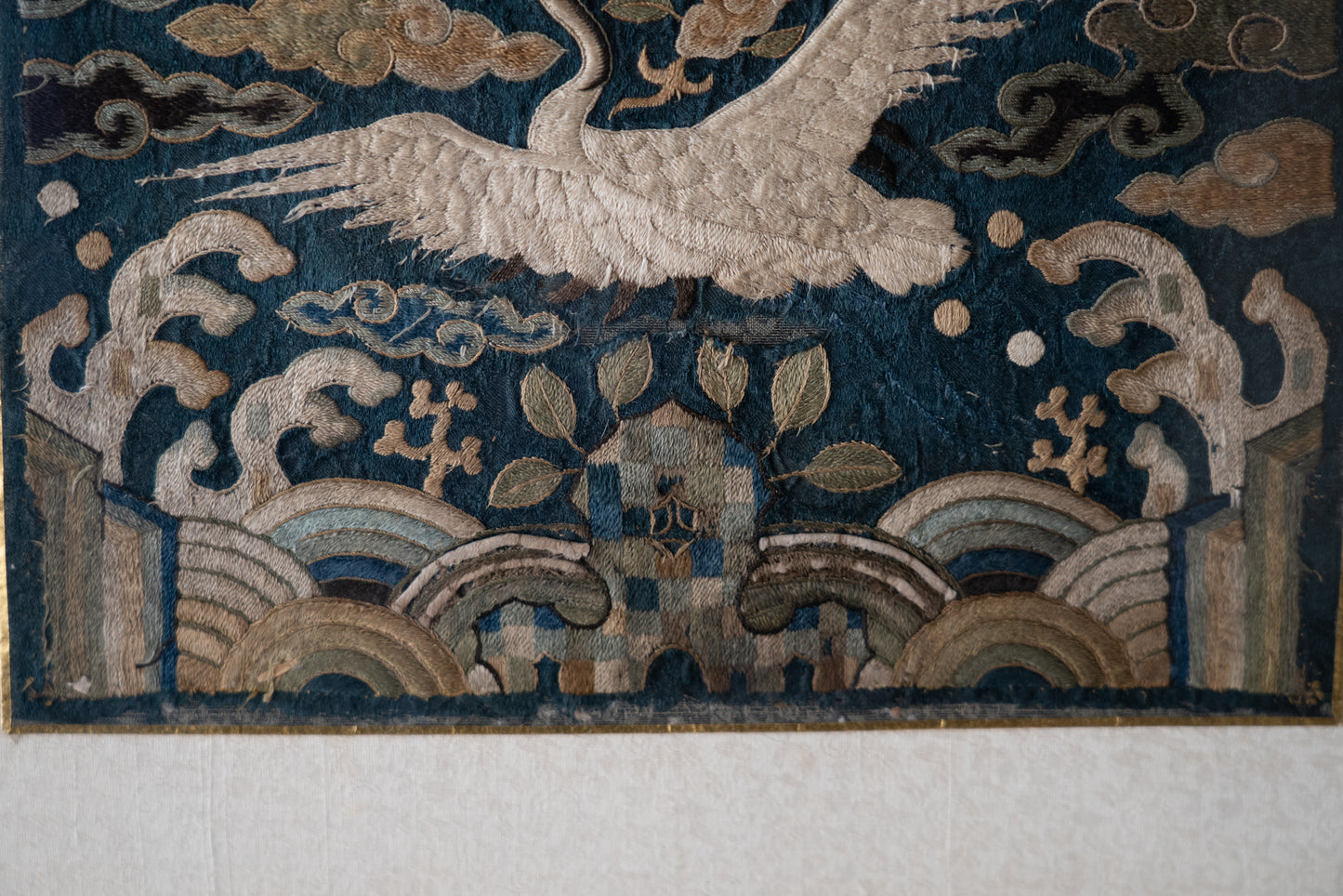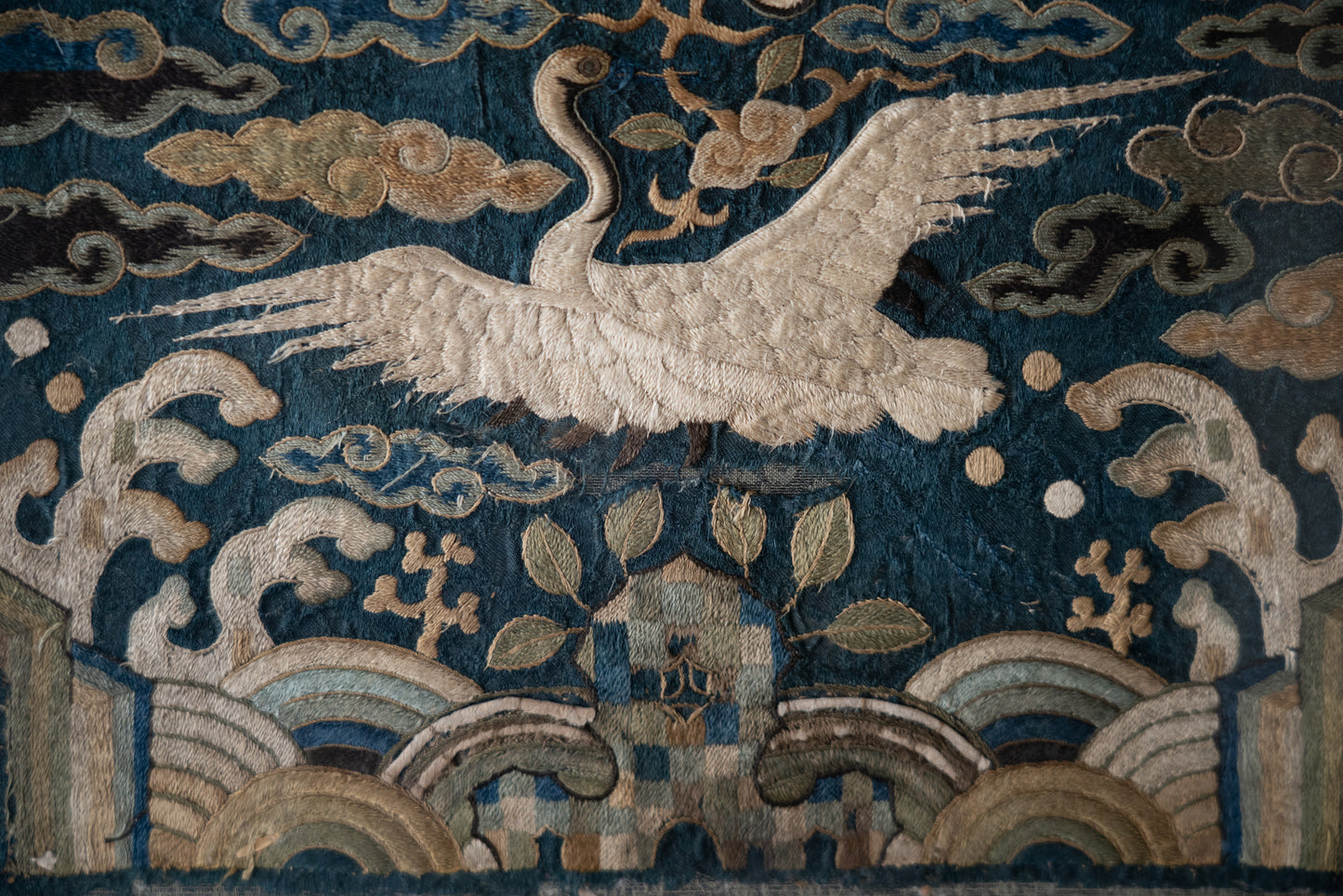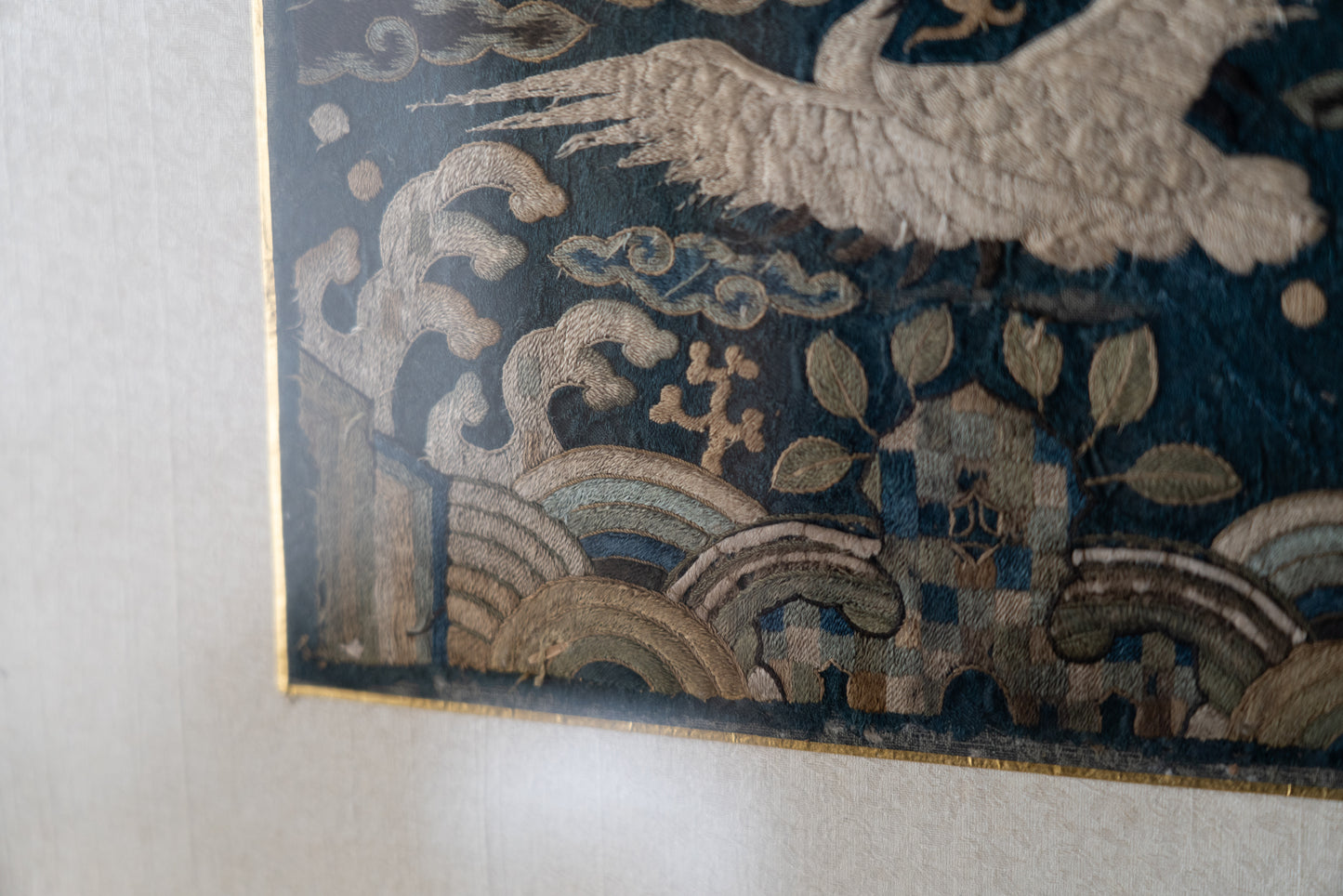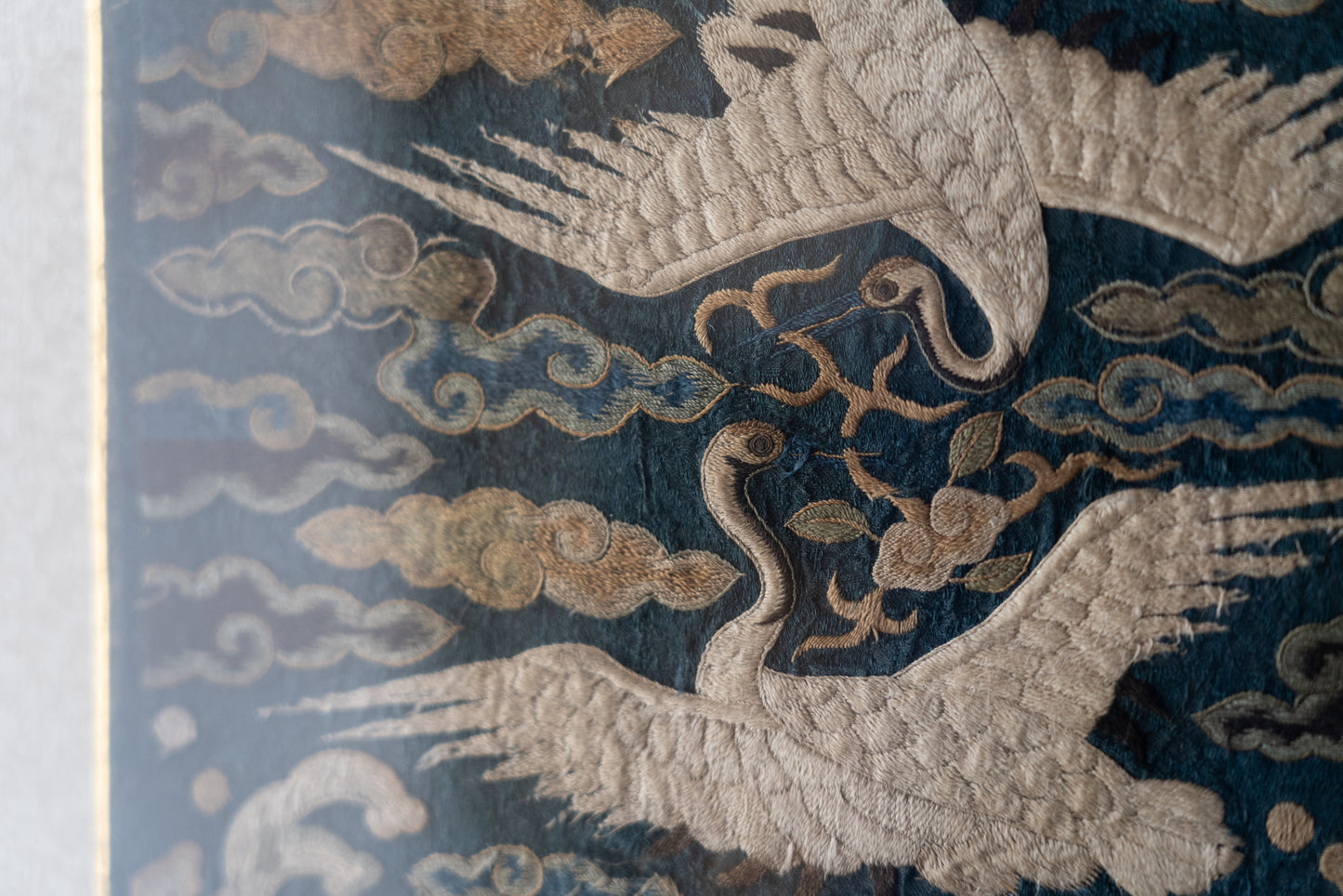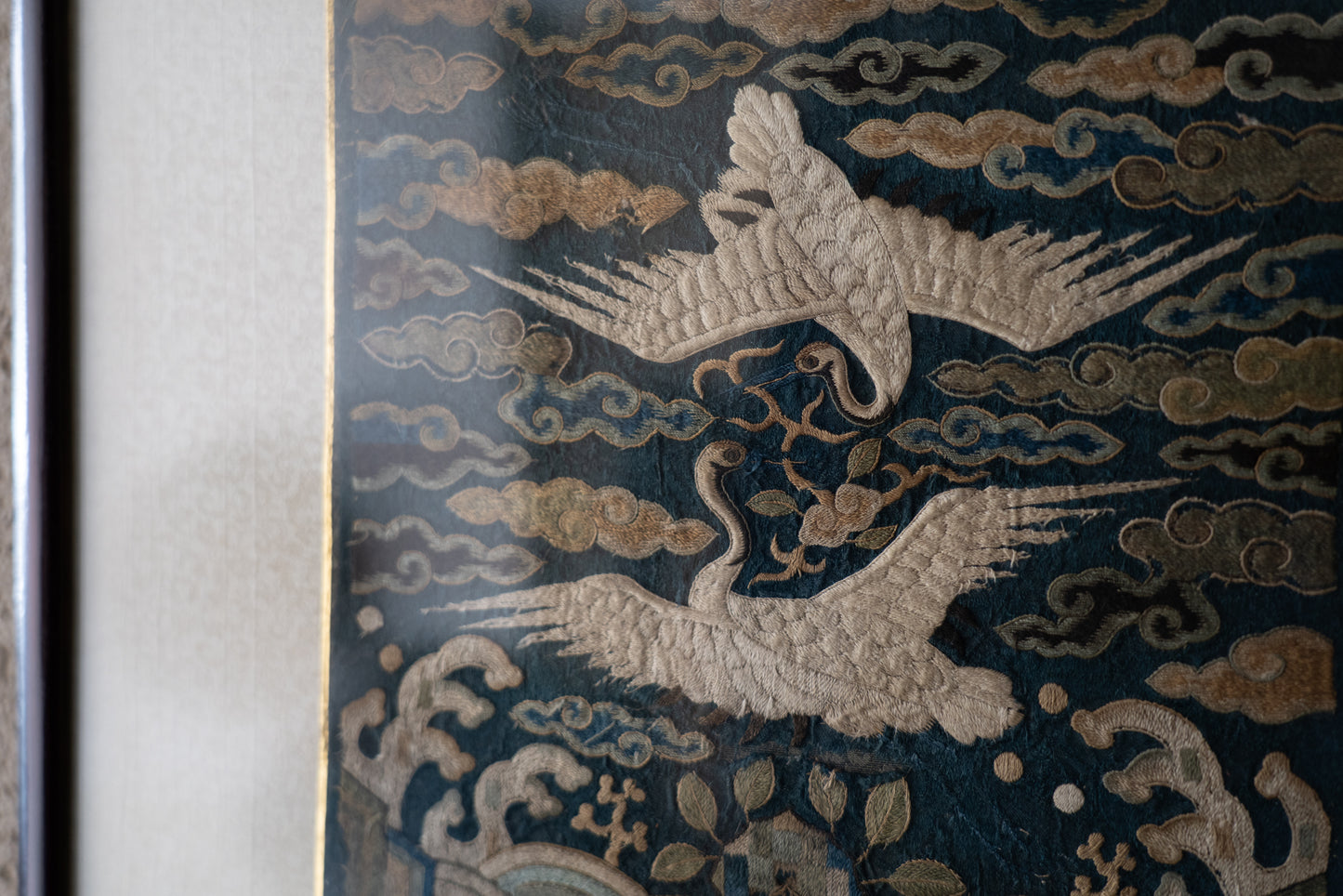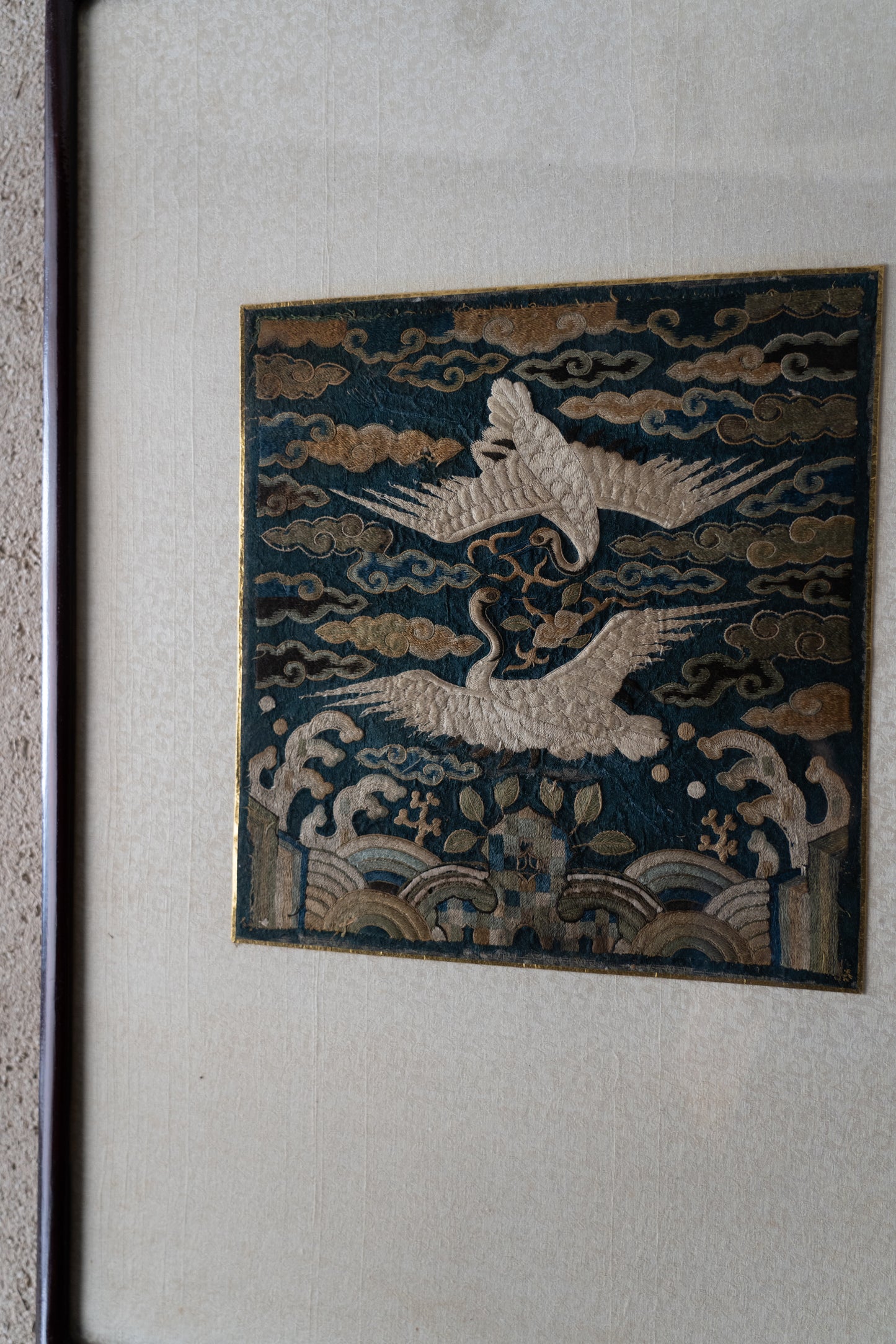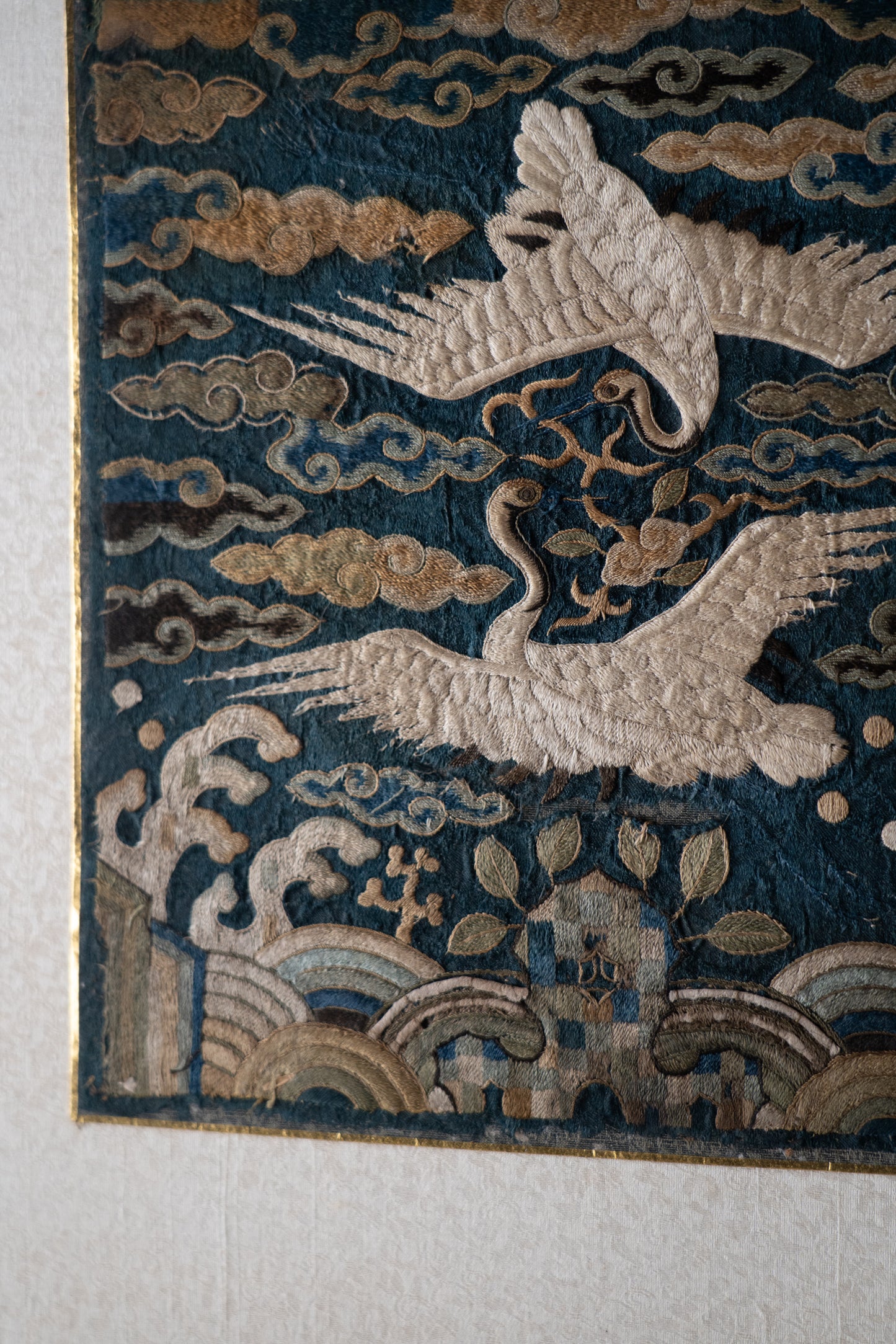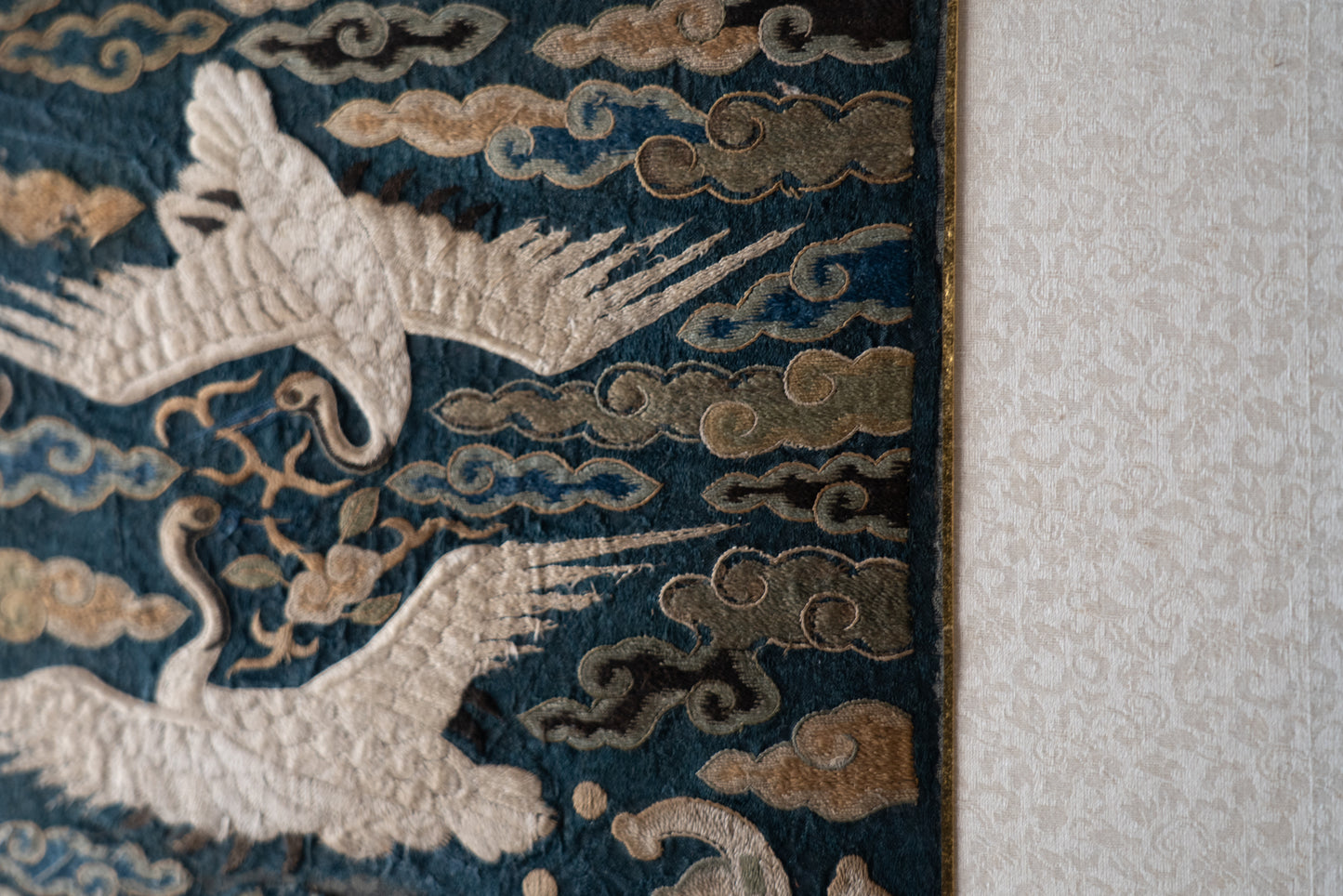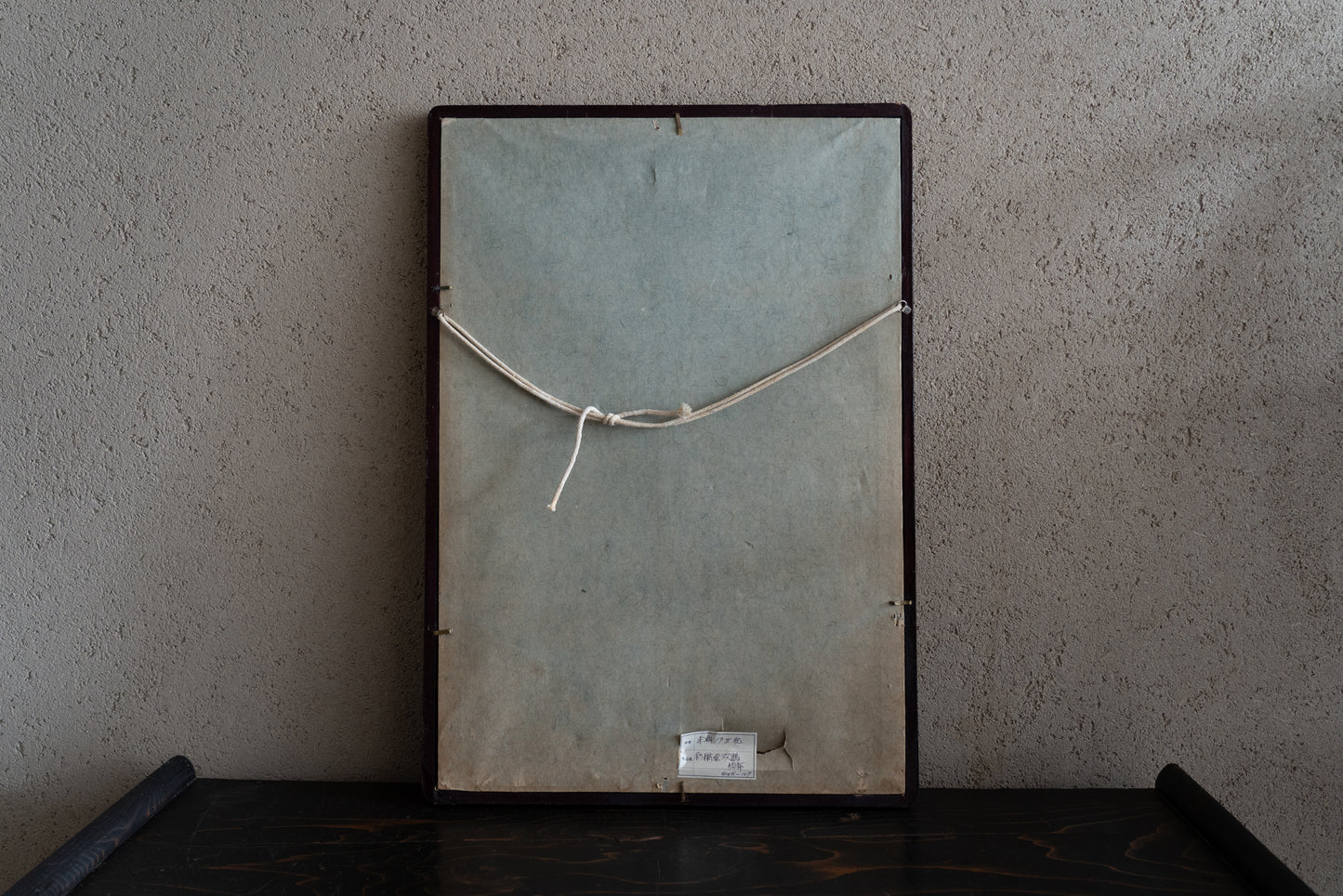Joseon embroidered insignia patch, Paired cranes pattern
- Region/Era Korean Peninsula / Joseon Dynasty, late 18th century - 19th century
- Size 25.0×23.8cm (Without frame)
- Condition Good antique condition
- Accessory Paper box
- No. 41nk-107
Insignia patch refers to the rank insignia sewn onto the chest and back of official uniforms during the Joseon Dynasty .
Called "humbe," it adorned the clothing of civil and military officials from around the end of the 15th century until the abolition of the chest and back system at the end of the 19th century.
Judging from the embroidery technique and design, this chest piece was worn by a civil servant who served at the imperial court from the late 18th century to the 19th century. It is said that the design of the twin cranes on this chest piece was only allowed to be used by high-ranking civil servants.

Let's take a closer look at the design.
In the center are two white cranes. The cranes are holding the herb of immortality in their mouths. The clouds around them are drawn in a variety of colors. I am impressed by the excellent color scheme, such as light blue with a navy blue border, or cream with a white border.

Looking down, you can see a large rocky mountain and the herb of immortality in the center. The checkered pattern of blue and green, based on dull tones, is very stylish, reminiscent of the paintings of Paul Klee. The waves are hitting the rocky mountains on both sides, sending up large splashes of water, and coral can be seen peeking out from above the large waves.
Cranes, the herb of immortality, waves, rocks, coral, and other auspicious motifs symbolize longevity and happiness.

These chest pieces were made in the imperial court's embroidery department, which specialized in embroidery. Many of the pieces were produced by artisans known as embroiderers, who had been trained in embroidery from a young age and had perfected their skills.
The production of embroidery involves various steps, such as creating a rough sketch, weaving the silk fabric, twisting the thread, and sewing. In Miyanui, a dedicated craftsman is assigned to each step, and the pieces are created through collaboration.
Even a single chest and back requires an immense amount of effort and the sophisticated skills of many craftsmen.

The Joseon dynasty was a time when various embroidery crafts developed, including chest and back embroidery, folding screens, and poshagi. Although it may not be as well known as other crafts, many people know that museums specializing in Korean art all over the country have excellent embroidery works in their collections.
The intricate embroidery techniques, which are impossible to reproduce today, the unique color schemes and sophisticated designs exude a sense of elegance.
The following website shows civil servant uniforms with chest and back attached.
https://bunka.nii.ac.jp/heritages/detail/559479 (Cultural Heritage Online)
To pick up and see the actual item in the gallery.
Reservation